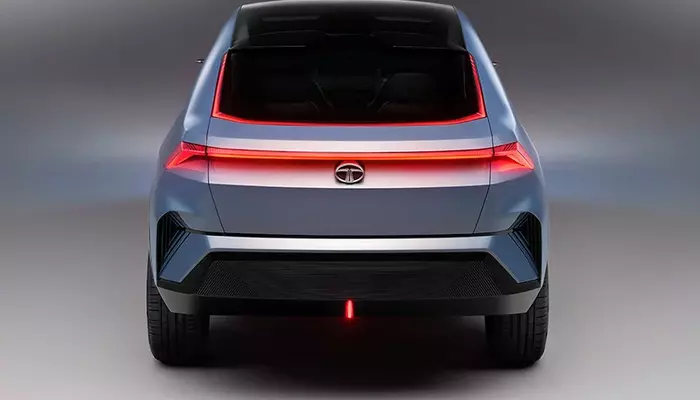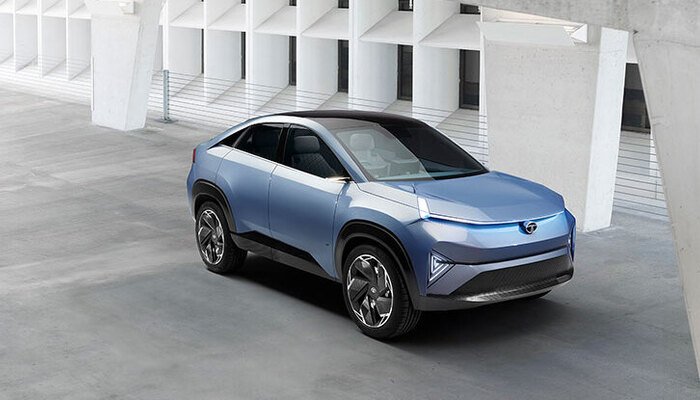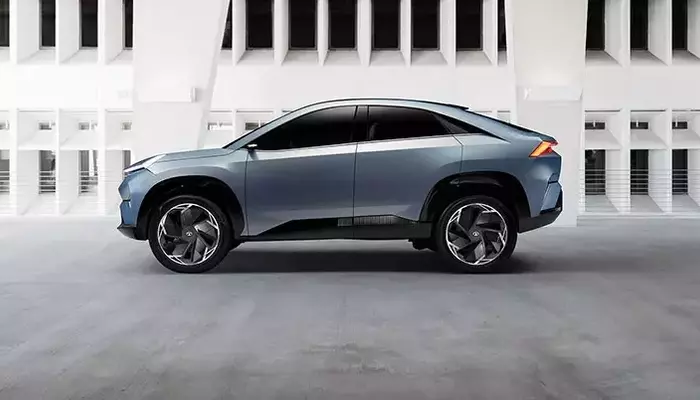
Tata Motors has lifted the curtains off from the all-new Curvv SUV-coupe concept, which will spawn electric and IC engine-powered SUVs in the next two years. It is the first time that Tata Motors has come up with an SUV-coupe design, which will be retained in the production versions of the SUV as well. Following are some of the key highlights which are drawn from this new cool-looking Tata Curvv concept:
Positioned above Tata Nexon EV

The electric vehicle version of the Tata Curvv concept will sit above the long-range Tata Nexon EV, which is also expected to launch in April 2022. The Nexon EV long range will have a bigger 40 kWh battery pack, and the new EV based on the Curvv concept will be offered as a bigger EV with more range and power on offer.
ALSO READ: Which Variant of Tata Punch is Value for Money?
Sized between Nexon and Harrier

Tata Motors currently is having a huge void between the sub-four-meter Nexon and the midsize SUV Harrier. The petrol and diesel versions of the Tata Curvv concept will be positioned between the Nexon and Harrier in Tata Motors’ lineup. It means that these versions of the Curvvv concept will take on the likes of Hyundai Creta, Kia Seltos, Volkswagen Taigun, Skoda Kushaq, MG Astor, Nissan Kicks and the soon-to-be-launched midsize SUVs from Maruti Suzuki and Toyota.
Based on a new architecture

The Tata Curvv concept sits on an all-new Generation 2 architecture, which is based on an existing platform of Tata Motors. It means that it is capable of accommodating both EV architecture and petrol and diesel powertrains. Tata Motors has said that the new architecture is also compatible with a dual-motor setup, which allows for an all-wheel-drive layout.
Exterior design highlights
With a visually dramatic-looking SUV-coupe design, the Tata Curvv concept debuts the new ‘Digital’ design language from the Indian carmaker, the highlights of which will be retained in the other SUVs from Tata Motors in the future. While the Curvv concept gets a full length LED bar with triangular LED headlamps at the front, it has a full-width LED tail-light bar and triangular air vents in the rear bumper at the back. The Tata Curvv concept also gets a strong shoulder line, squared wheel arches with body cladding and a notchback-styled boot.
Interior design highlights

The minimalist-looking cabin of the Tata Curvv concept has a three-layered dashboard, the unique highlights of which are an LED light bar running across its width and the use of fabric material on its upper part. The cabin looks futuristic with two free-standing, full-TFT, rectangular screens – one for the instrument console behind the two-spoke steering wheel and another larger one for the infotainment system in the middle. The steering wheel comes with illuminated switches, which are the same as the small panel for automatic climate control in the lower centre console. The concept also features a panoramic sunroof and floating centre console between the seats which gets a rotary gear selector.
Expected EV powertrain
Since the electric vehicle production version of the Tata Curvv concept will be positioned above the Nexon EV, the former might be offered with a bigger battery pack with a range of 400-500 km and a more powerful motor than the latter. However, it is a possibility that the production version of the Curvv concept might also come with the same 40 kWh battery pack, which is likely going to be introduced in the long-range Nexon EV.
Expected petrol and diesel powertrains
For the petrol-powered SUV based on the Curvv concept, Tata Motors might use the rumoured 1.5-litre turbocharged petrol engine, which the company is said to be working on for the Harrier and Safari. For the diesel-powered versions, the 1.5-litre diesel engine from the Nexon might be considered.
The time frame of production version’s launch
The officials from Tata Motors have clearly said that the production versions of the Tata Curvv concept will be launched in the next two years. While the electric vehicle version of the SUV-coupe will come first, it will be followed soon by the petrol and diesel-powered versions.
ALSO READ:
You must be logged in to post a comment Login